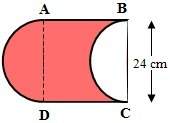
Mathematics, 24.08.2019 19:30 zamorano5912
For a standard normal distribution, which of the following expressions must always be equal to 1?
a) p(z≤-a)-p(-a≤z≤a)+p(z≥a)
b) p(z≤-a)-p(-a≤z≤a)+p(z≥a)
c) p(z≤-a)+p(-a≤z≤a)-p(z≥a)
d) p(z≤-a)+p(-a≤z≤a)+p(z≥a)

Answers: 2


Another question on Mathematics

Mathematics, 21.06.2019 17:00
High schoolmathematics 5 points keith is the leading goal scorer for a team in an ice hockey league. last season, he scored 42 goals in 82 games. assuming he scores goals at a constant rate, what is the slope of the line that represents this relationship if the number of games is along the x-axis and the number of goals is along the y-axis?
Answers: 1


Mathematics, 21.06.2019 22:30
Factor the polynomial, if possible. if the polynomial cannot be factored, write prime. 9n^3 + 27n^2 – 25n – 75
Answers: 2

You know the right answer?
For a standard normal distribution, which of the following expressions must always be equal to 1?
Questions

Mathematics, 03.06.2020 13:19


History, 03.06.2020 13:19

Mathematics, 03.06.2020 13:19



German, 03.06.2020 13:19

Mathematics, 03.06.2020 13:19

Chemistry, 03.06.2020 13:19

Social Studies, 03.06.2020 13:19

Chemistry, 03.06.2020 13:19

Mathematics, 03.06.2020 13:19


Mathematics, 03.06.2020 13:19

Mathematics, 03.06.2020 13:19




Mathematics, 03.06.2020 13:19

Mathematics, 03.06.2020 13:19




